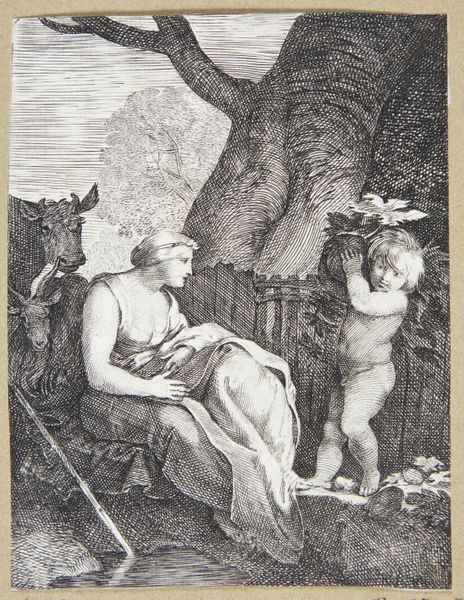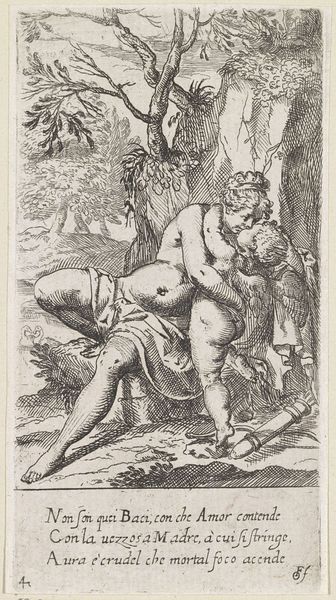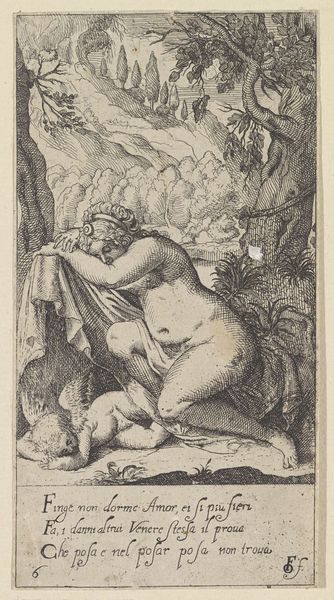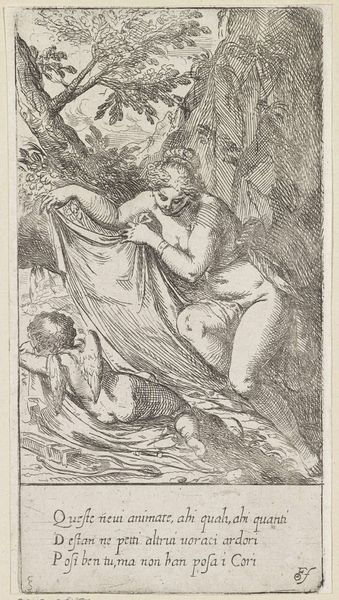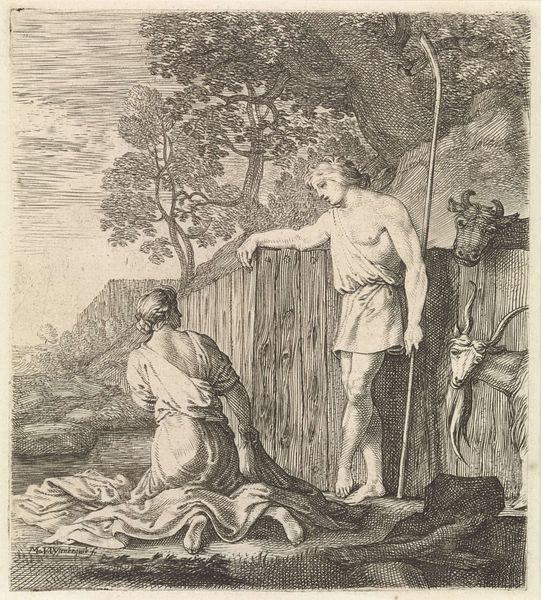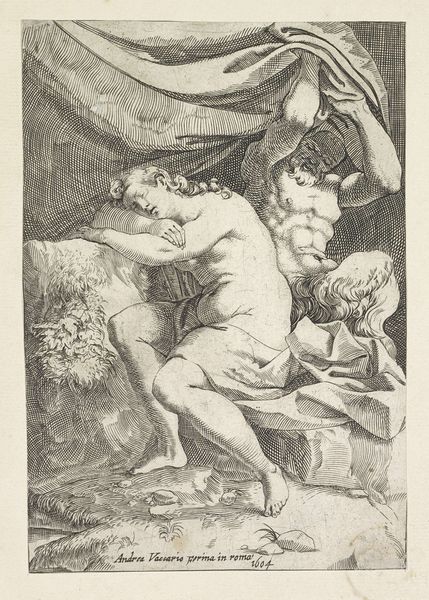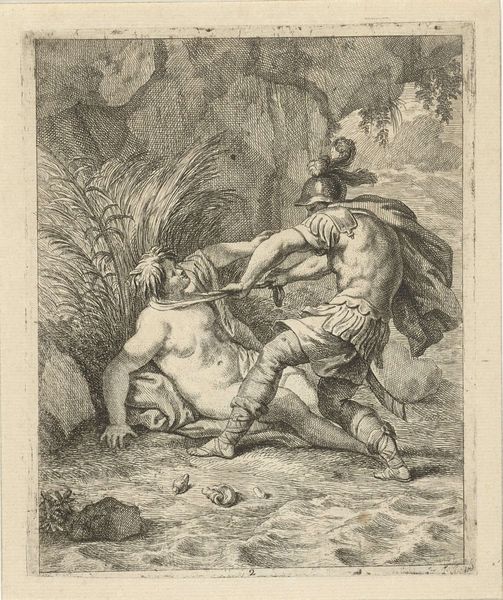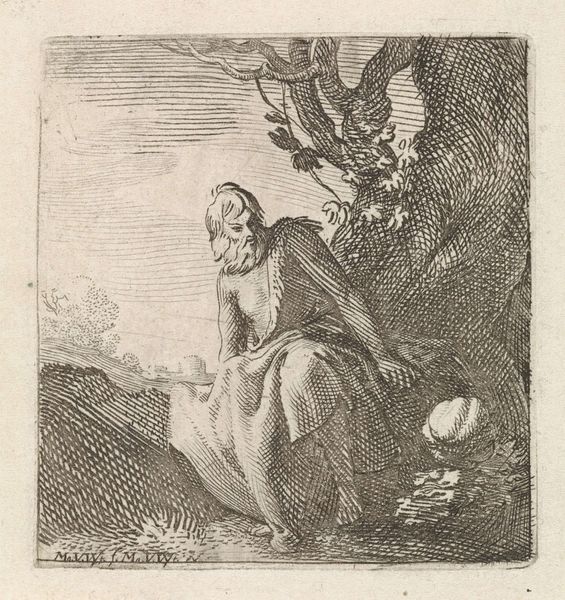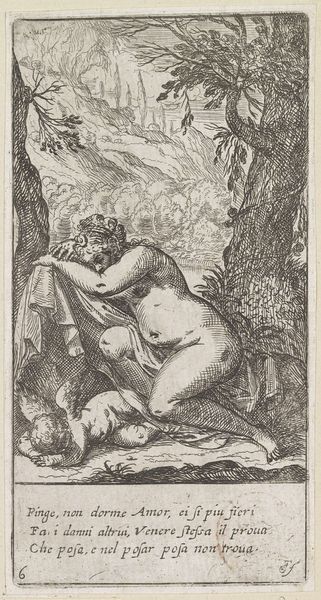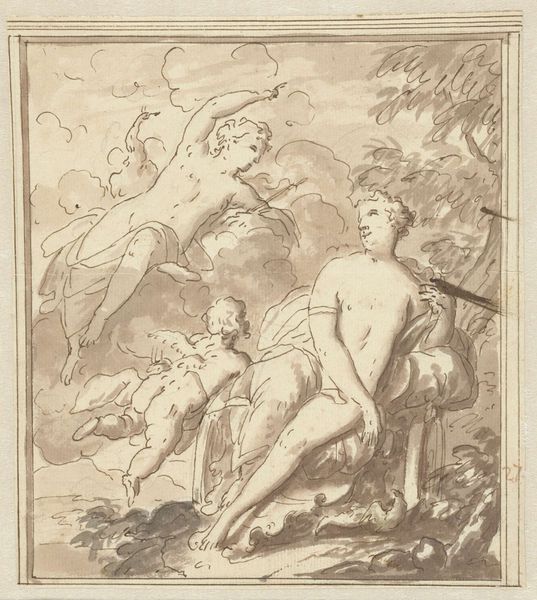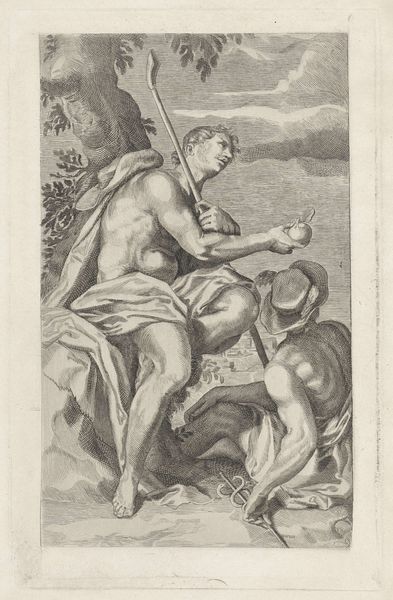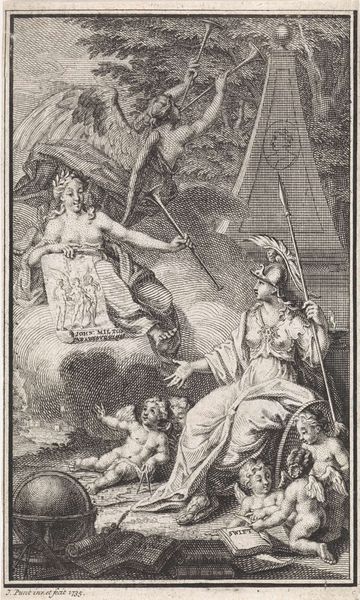
print, etching
#
narrative-art
#
baroque
# print
#
etching
#
landscape
#
figuration
#
pencil drawing
#
genre-painting
Dimensions: height 123 mm, width 94 mm
Copyright: Rijks Museum: Open Domain
Curator: Let's delve into this print, "Zittende vrouw en kind" which translates to "Seated Woman and Child", possibly created between 1600 and 1660 by Moyses van Wtenbrouck. It's an etching, a testament to the artist's skill in the Baroque period. What are your first thoughts? Editor: Immediately, I'm drawn to the tangible quality achieved through etching. The scene seems alive because of the layered textures in the landscape and the contrast of dark and light to give form. It's almost a celebration of the etching process itself! Curator: Absolutely. The emphasis on figuration brings up narratives of motherhood, care, and potentially allegorical connections to fertility or abundance within the context of the domestic sphere. How might this connect to power dynamics within 17th-century Dutch society? Editor: I think Wtenbrouck also highlights labor. Look at the small figure of the child with the unwieldy container, seemingly a water or food vessel, the pastoral theme here doesn’t let us forget labor that is needed to survive, perhaps also alluding to colonial exploitation by the Dutch. The materiality of everyday life for people. Curator: Interesting, yes. It also highlights the societal role of women – confined to that domestic sphere while also carrying the burden of providing for their offspring. How would you consider class and status interacting here through fashion and depictions of work in genre scenes? Editor: I note that the landscape seems as carefully worked on as the central figures, which tells us a great deal about the integration of labor with nature. The clothing tells us a certain story about material means – what are the affordances afforded to this community through trade relationships for cloth? And who creates it? Curator: These considerations are powerful, I think. The artist clearly invites viewers to consider what the production of art, of raising children, of existing within the world meant and could mean at the time. Editor: Yes, exactly. Through close inspection of these works and our dialogues, we gain access to critical intersections of making, living and existing within history. Thank you for taking me through this! Curator: And thank you for this material reading and bringing it all to life!
Comments
No comments
Be the first to comment and join the conversation on the ultimate creative platform.
